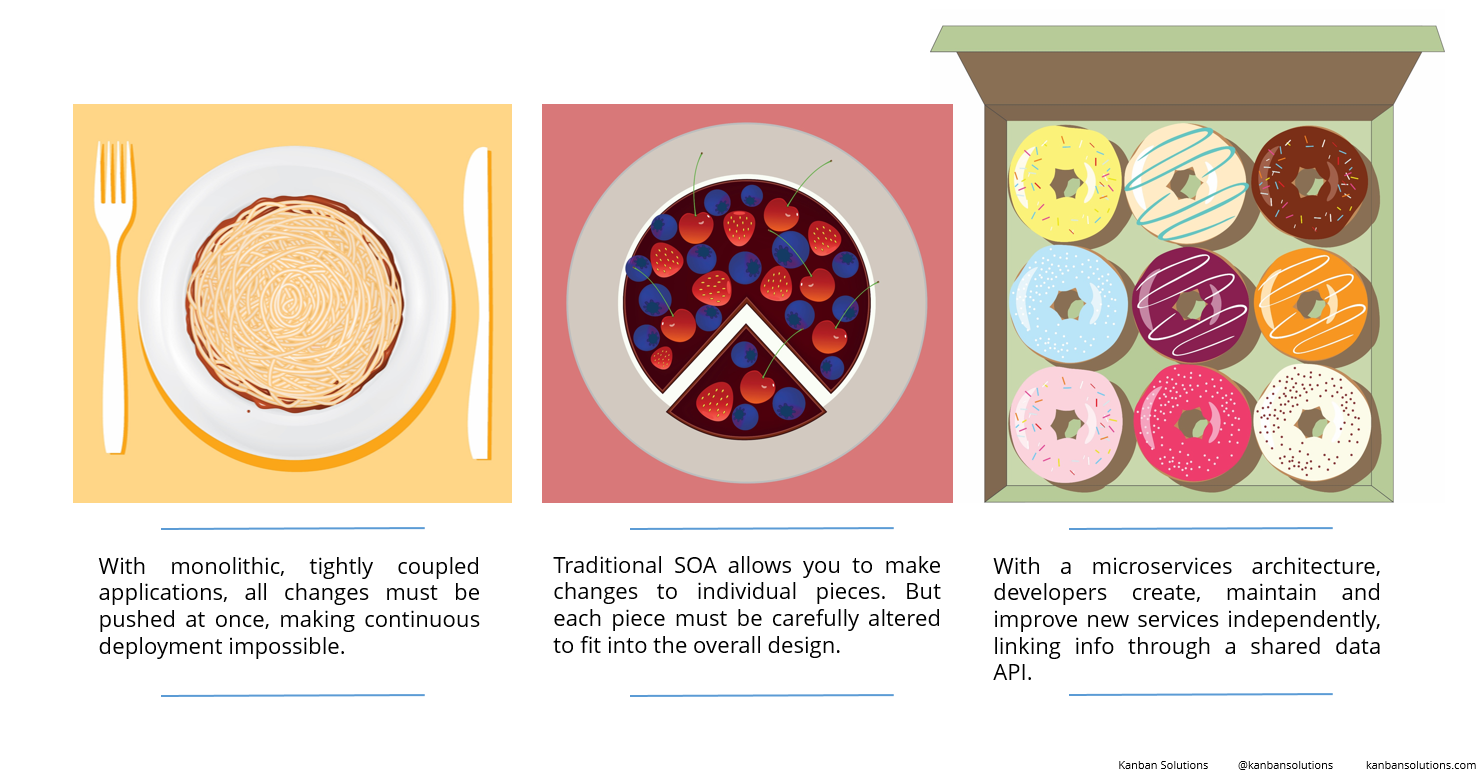Cloud computing has revolutionized software development, architecture, and deployment. With microservices-based applications, developers can keep up with innovation by designing services in functional chunks instead of maintaining a monolithic codebase and resource pool.
Table of contents:
- Microservice architecture – definition
- Microservices: advantages and disadvantages
- Microservice architecture – what's the next step?
Microservice architecture – definition
Microservice architecture is a new approach to software development that emerged as the industry began to shift toward agility. It's a software architectural pattern in which complex enterprise applications are structured as a collection of small services, allowing separate development teams to work on multiple microservices at the same time.
When the architecture of your software necessitates the involvement of cross-functional teams, microservices are extremely effective. Each will focus on a specific business capability.
This is a significant advancement over monolithic applications. The traditional approach to software architecture entailed cramming each and any business functionality into a single service. This made deploying new features extremely difficult, limiting opportunities to update the application – as each was invariably associated with lengthy downtimes. Plus, each time we plan to scale one service, we'd better be prepared for scaling the entire application.
Now, microservices enable rapid and error-free software changes by modularizing complex applications into distributed parts that can run in parallel without interfering with one another. This is critical in the age of rapid application development, allowing for business capabilities growth through the use of agile deployment. With increasing scale, the goal switches to improving software delivery speed and system safety.
Due to its small size, independence, and loose coupling, each service can be developed and deployed independently by a small team. Also, each service may use a different technology stack, language, libraries, or frameworks.
Microservices vs. Service-Oriented Architecture (SOA)
Microservices architecture has been hailed as a game-changer in recent years, while SOA's dominance has been steadily declining. Still, microservices are a technical evolution of SOA.
The Service-Oriented Architecture was one of the extensive efforts to standardize how web service API of a multitude of components communicate and integrate. In contrast, the microservice architecture is an application-specific platform.
SOA followed a centrally governed architecture where each component is controlled by a central middleware (services are scaled horizontally), allowing each service to be written in a different language. In microservices it is a decentralized governing system where components speak directly to each other, can be written in different programming languages, and communicate without the use of a broker and with the aid of REST API. As a result, microservice applications adhere to the architectural design principle of "share as little as possible," whereas SOA applications adhere to the "share as much as possible" principle.
In addition, whereas microservices communicate via a simple API layer, SOA communicates via an Enterprise Service Bus (ESB). Moreover, microservices typically offer quick and simple deployment and scaling options, whereas SOA deployment and scaling options are less flexible.
Take a look at the comparison of monolithic, SOA, and microservice applications prepared by the Kanban Solutions authors:
Microservice architecture vs. Monolithic architecture
Monolithic architecture is the simplest type of architecture. It is essentially a single application layer that hosts and delivers all software components. With the expansion of web technologies and the growing consumer demand for agile applications, the monolithic approach faces several challenges in keeping up with these shifting requirements.
The most difficult part of scaling up this system is duplicating the entire system, including all of the features of other machines, which raises costs. The failure of a single component also has an impact on the system's unreliability. Furthermore, as the requirements of the monolithic application grow, it becomes more difficult to isolate services for independent scaling, code maintenance, and new idea implementation.
The primary distinction is that microservices seek to divide applications into smaller components, whereas monolithic architecture creates applications as a single unit.
Microservices vs. Application Programming Interfaces (APIs)
APIs are typically a set of programming instructions that allow computer systems to "communicate" and share functionalities. An API gives developers access to an application's data, allowing them to retrieve features and build robust integrations.
Because it facilitates communication between its various components, an API can be considered a component of a microservice architecture.
The advantages of microservices
- Improved fault isolation: because of its modularity, it is easier to manage different types of changes during the development process (i.e.: fix a bug, update an existing service, isolate the faulty service)
- Continuous delivery: businesses can confidently modify existing features or add new ones without bringing down the application
- A small development team focuses on a specific feature, which results in greater flexibility, autonomy, and a shorter development cycle
- Microservices enable teams to select a new technology stack and the best tools for solving their specific problems, rather than being limited to a one-size-fits-all approach
- Since the functionalities are deployed independently, you can monitor and scale them without affecting the application as a whole
- Code is written in smaller chunks
- Simple to integrate with third parties
The disadvantages of microservices
- Continuous deployment: while individual services (components) are simpler to manage, the application as a whole is complex. A high level of automation is usually required.
- More difficult testing, especially if the application is rapidly expanding.
- Operational complexity: DevOps is complicated, and production monitoring is more expensive. And because the services are hosted on separate servers, the application may require multiple runtime environments and CPUs.
- Maintaining data consistency is tricky: Management of multiple databases and their transactions is slightly more difficult in large systems.
- The decentralized design of the microservices architecture exposes more targets to attacks.
Microservice architecture – what's the next step?
Microservices are ideal for building complex, multifunctional applications that meet today's demand for agile, user-centric applications. In fact, the majority of monolithic applications are now evolving toward microservices-based architecture. Netflix, Amazon, Spotify, eBay, and many other web-based giants have already implemented the concept of neighboring services.
When discussing company size, it's important to note that there is no universal metric for determining the optimal size (and number) of microservices. It's always a good idea to divide the business logic into core elements and functions [later: components] so that the distributed system is built with service functionality in mind – rather than just a few lines of code.
And, as the code needs a specific function to perform, it is best to evaluate your needs and abilities before adopting the microservices architecture in order to fully meet the requirements of this innovative software architecture style. Especially in times of upcoming Web 3.0., when emerging technologies and skyrocketing network latency are forcing web-based businesses to meet the availability requirements by adjusting the service design (with user interface in mind).
If you're unsure whether microservices are right for your business, contact us and schedule a quick chat with one of our technical advisors.


